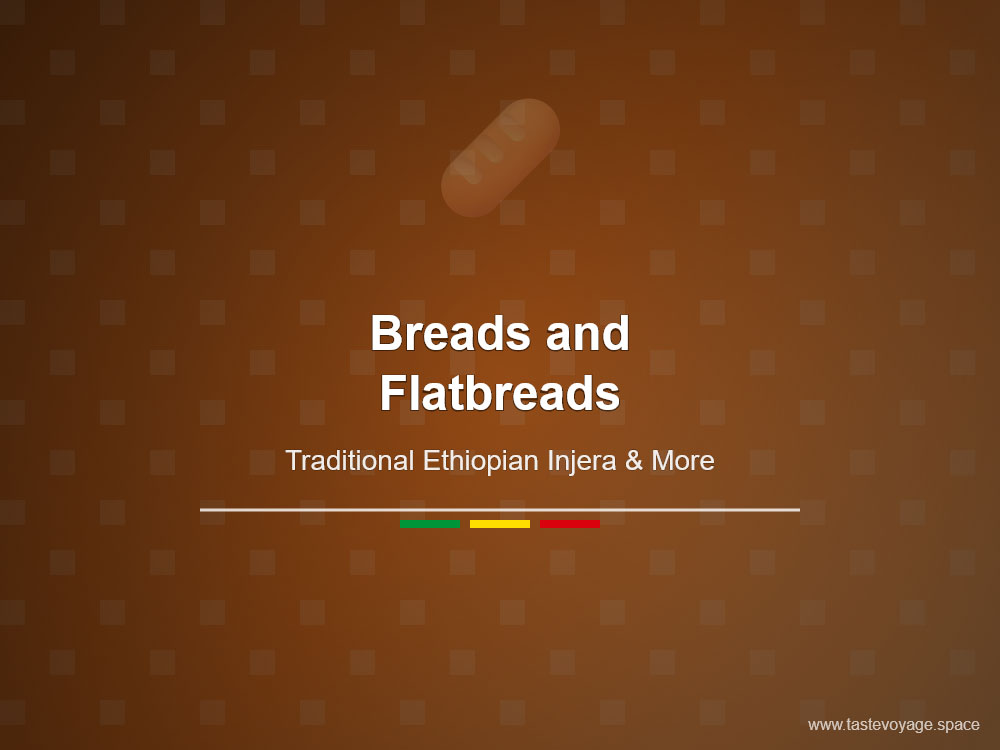Authentic Ethiopian Injera Recipe | Easy Fermented Flatbread
Travel the World Through Food >> Breads and Flatbreads>>Ethiopian Cuisine>> Authentic Ethiopian Injera Recipe | Easy Fermented Flatbread
Authentic Ethiopian Injera Recipe | Easy Fermented Flatbread
Discover the Cultural Richness of Authentic Ethiopian Injera
Injera is more than just a flatbread; it is a cornerstone of Ethiopian cuisine and a symbol of communal harmony. This iconic dish carries a deep cultural significance, representing hospitality, tradition, and the artistry of fermentation. As the backbone of many Ethiopian meals, injera unites families and communities around the dining table, fostering a sense of togetherness and shared heritage.
A Culinary Treasure Rooted in Tradition
Ethiopian injera is renowned for its unique texture and tangy flavor, which come from the natural fermentation process. Made primarily from teff, a tiny grain native to Ethiopia, injera boasts a rich nutritional profile. The fermentation process, taking several days, allows the batter to develop complex flavors and a light, spongy structure that is perfect for scooping up stews and vegetables. This culinary technique has been passed down through generations, reflecting the deep-rooted traditions of Ethiopian cooking. The dish embodies a harmony between simplicity and complexity, showcasing the skill and patience of its makers.
The Role of Injera in Ethiopian Culture
For Ethiopians, injera is more than a food item; it is a cultural emblem. It is traditionally served on a large, shared platter called a messoba, where several types of stews and lentils are arranged atop the injera. This communal way of eating emphasizes unity and generosity—values highly cherished in Ethiopian society. Preparing and sharing injera symbolizes respect and fostering relationships, making it an integral part of celebrations, family gatherings, and daily life.
A Reflection of Ethiopian Heritage
The art of making authentic injera is deeply intertwined with Ethiopian history and identity. The distinct taste, texture, and appearance of injera speak to the country’s rich agricultural traditions and diverse landscapes. Teff, which grows abundantly in Ethiopia, is a testament to the nation’s resourcefulness and culinary ingenuity. The fermentation process not only enhances flavor but also demonstrates Ethiopia’s mastery of traditional food preservation methods. Every bite of injera offers a glimpse into the country’s cultural landscape and its long-standing culinary heritage.
Celebrating Diversity Through Food
Ethiopian cuisine is renowned for its bold flavors and vibrant dishes, and injera plays a pivotal role in this culinary mosaic. It acts as a versatile canvas for a variety of flavorful stews, such as doro wat and shiro, and complements a wide array of vegetarian and meat dishes. Its absorbent quality enhances the dining experience, allowing flavors to meld beautifully. This dish exemplifies Ethiopia’s ability to bring people together through shared tastes and traditions, celebrating the diverse ingredients and culinary techniques that define its food culture.
Conclusion: A Timeless Symbol of Ethiopian Hospitality
Authentic Ethiopian injera is more than a delicious flatbread; it is a symbol of Ethiopian hospitality, tradition, and cultural identity. Its unique fermentation process, nutritional richness, and role in communal dining underscore its importance in Ethiopian life. Whether enjoyed during festive occasions or everyday meals, injera continues to inspire admiration for Ethiopia’s culinary heritage. Embracing this emblematic dish offers a flavorful journey into the heart of Ethiopian culture—a celebration of history, community, and the art of Traditional Cooking.
